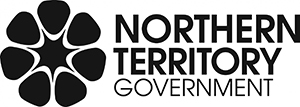Siam weed update 2023
As at November 2023, Siam weed is known to be present on over 130 sites across 11 properties in the Northern Territory (NT). These infestation sites extend over 3 major catchments: the Finniss, Reynolds and Daly Rivers. The current known infestations span approximately 9,500 km2 of the western Top End. The furthermost infestation now sits over 100 km from the first recorded infestation.
In July 2023, the Weed Management Branch conducted aerial surveys in collaboration with landowners, Litchfield National Park and the Bulgul Land and Sea Rangers (see Figure 1).
There was a number of new detections found during the aerial surveys this year, but fortunately there has been no significant range extension in the last 12 months. One new detection on the Reynolds River, just outside the boundaries of Litchfield National Park, is cause for concern however extensive aerial survey across Litchfield National Park found no Siam weed within the park. There was a noticed increase in Siam within the core area.
Figure 1. Aerial survey flight paths
The Weed Management Branch has also continued ground surveys and prioritised treatment of all Siam weed outside of the core infestation areas. Over the last year, all 130 Siam weed sites have been treated at least once, with some sites being treated up to three times. Most sites outside of the core area have seen a marked reduction of Siam weed density and reduction of mature plants.
Aerial spray trials have been ongoing to refine the best aerial control methodology by determining
- the most effective and cost-efficient use of herbicide and wetter mixes
- refinement of chemical and application rates per hectare
- the best timing for control when taking into account seasonal factors
- incorporation of savanna burning practices to achieve better results
Significant aerial spraying was undertaken in May 2023 across the core area that has shown encouraging results.
The results of these spray trials as well as other information to help land managers manage Siam weed will be included in a Siam Weed Management Guide that is close to being finalised by the Weed Management Branch, in collaboration with the Queensland Government. The guide looks to provide land managers with a suite of control options depending on the infestation scenario. The guide is expected to be finalised by the end of the year and will be available online.
The Weed Management Branch also continues to breed and release gall flies at several sites across the core area. The gall flies damage the stems and become vectors of infection in the plant, in turn reducing flowering and seeding. The flies are now considered to have established self-sustaining populations at several locations.
Funding has been provided by the Australian Government through its Established Pest Animals and Weeds Program.
For more information and to make a Siam weed report, go to the Northern Territory Government website or send an email to joshua.maeer@nt.gov.au.




